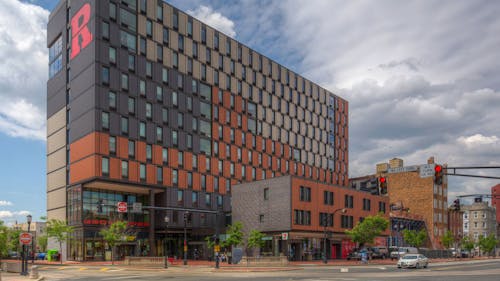COMMENTARY: Rutgers must distribute opportunities equitably across all Rutgers campuses
Commentary

On April 11, Rutgers—Camden hosted its inaugural Chancellor’s Lecture on Global Racial Reckoning and Civility with Professor Sheryll D. Cashin, Carmack Waterhouse Professor of Law, Civil Rights and Social Justice at Georgetown Law.
Cashin used her latest book, "White Space, Black Hood: Opportunity Hoarding and Segregation in the Age of Inequality," as a point of departure for considering these weighty issues, and her illuminating presentation was well received by the wall-to-wall audience in Camden’s multipurpose room.
Although Cashin’s analysis was focused on economically impoverished Black and Brown communities in cities such as Philadelphia, Baltimore and Chicago, her insights are also useful for thinking about the abject position of Rutgers—Camden within the larger Rutgers University system.
The core of Cashin’s argument is that three techniques are responsible for the concentration of poverty in modern U.S. cities: opportunity hoarding, boundary maintenance and surveillance.
Opportunity hoarding means overinvestment in some spaces and disinvestment in others —that is, spending millions of dollars in certain neighborhoods, downtowns and school districts while bypassing others, thereby creating conditions of affluence and poverty that appear self-evident and inevitable when they are, in fact, controllable.
Boundary maintenance means preserving the conditions created by hoarding, ensuring that the distinctions between communities are preserved and the privileged retain their elite status.
To the students, staff and faculty of Rutgers—Camden, these first two modes of disenfranchisement sound eerily familiar. Indeed, the phrases “opportunity hoarding” and “boundary maintenance” could well serve as captions for any side-by-side comparison of the resources available to students, staff and faculty at Rutgers—New Brunswick and other parts of the Rutgers system.
Whether we consider investments in residence halls, classrooms, course variety, student services, staff or faculty pay, it is clear that Camden and Newark do not hold a candle next to the high-intensity football stadium lights of New Brunswick.
If Rutgers wants to reckon with this inequity, it would do well to take a page from Cashin’s book. She writes that the most effective way to combat inequity is to “invest resources and transfer assets”. Those are fighting words.
Rutgers likes to claim it is revolutionary, but it can only pay lip service to the kind of redistribution of resources for which "White Space, Black Hood" is calling.
How revolutionary would it be for Rutgers to house students in Camden according to the standards of residence halls in New Brunswick? How revolutionary would it be for Rutgers to compensate staff and faculty in Camden the way it compensates staff and faculty in other parts of the Rutgers system?
Cashin’s inspiring lecture was the first of many to come on the theme of Global Racial Reckoning and Civility. The lecture series is timely and welcome. But Rutgers needs to honor Cashin’s work and analysis by seriously investing in the Camden campus and giving it the resources it needs.
YOUR VOICE | The Daily Targum welcomes submissions from all readers. Due to space limitations in our print newspaper, letters to the editor must not exceed 500 words. Guest columns and commentaries must be between 700 and 850 words. All authors must include their name, phone number, class year and college affiliation or department to be considered for publication. Please submit via email to oped@dailytargum.com by 4 p.m. to be considered for the following day’s publication. Columns, cartoons and letters do not necessarily reflect the views of the Targum Publishing Company or its staff.



